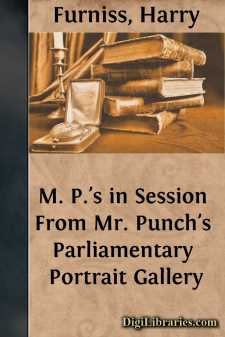Categories
- Antiques & Collectibles 13
- Architecture 36
- Art 48
- Bibles 22
- Biography & Autobiography 814
- Body, Mind & Spirit 145
- Business & Economics 28
- Children's Books 17
- Children's Fiction 14
- Computers 4
- Cooking 94
- Crafts & Hobbies 4
- Drama 346
- Education 53
- Family & Relationships 59
- Fiction 11833
- Foreign Language Study 3
- Games 19
- Gardening 17
- Health & Fitness 34
- History 1377
- House & Home 1
- Humor 147
- Juvenile Fiction 1873
- Juvenile Nonfiction 202
- Language Arts & Disciplines 88
- Law 16
- Literary Collections 686
- Literary Criticism 179
- Mathematics 13
- Medical 41
- Music 40
- Nature 179
- Non-Classifiable 1768
- Performing Arts 7
- Periodicals 1453
- Philosophy 66
- Photography 2
- Poetry 897
- Political Science 203
- Psychology 45
- Reference 154
- Religion 516
- Science 126
- Self-Help 85
- Social Science 82
- Sports & Recreation 34
- Study Aids 3
- Technology & Engineering 59
- Transportation 23
- Travel 463
- True Crime 29
Our website is made possible by displaying online advertisements to our visitors.
Please consider supporting us by disabling your ad blocker.
The Confessions of a Caricaturist, Vol. 2
by: Harry Furniss
Categories:
Description:
Excerpt
In the year 1887 he startled the town and made a Society sensation by means of an exceedingly original enterprise which any man of less audacious and prodigious power of work would have shrunk from in its very inception. For years this Titanic task was in hand. This was his celebrated 'artistic joke,' the name given by the 'Times' to a bold parody on a large scale of an average Royal Academy Exhibition. This great show was held at the Gainsborough Gallery, New Bond Street, and consisted of some eighty-seven pictures of considerable size, executed in monochrome, and presenting to a marvelling public travesties—some excruciatingly humorous and daringly satirical, others really exquisite in their rendering of physical traits and landscape features—of the styles, techniques, and peculiar choice of subjects of a number of the leading artists, R.A.'s and others, who annually exhibit at Burlington House. It was a surprise, even to his intimate friends, who, with one or two exceptions, knew nothing about it until the announcement that Mr. Furniss had his own private Royal Academy appeared in the 'Times.' He worked in secret at intervals, under a heavy strain, to get the Exhibition ready, particularly as he had to manage the whole of the business part; for the show at the Gainsborough Gallery was entirely his own speculation. Granted that the experiment was daring, yet the audacity of the artist fascinated people. Nor did the Academicians, whom some thought would have been annoyed at the fun, as a body resent it. They were not so silly, though a minority muttered. Most of them saw that Mr. Furniss was not animated by any desire to hold them up to contempt, but his parodies were perfectly good-natured, that he had served all alike, and that he had only sought the advancement of English art. During the whole season the gallery was crushed to overflowing, the coldest critics were dazzled, the public charmed, and literally all London laughed. It furnished the journalistic critics of the country with material for reams of descriptive articles and showers of personal paragraphs, and whether relished or disrelished by particular members of the artistic profession, at least proved to them, as to the world at large, the varied powers (in some phases hitherto unsuspected) and exuberant energies of the Harry Furniss whose name was now on the tongue and whose bold signature was familiar to the eyes of that not easily impressed entity, the General Public.
"In fact, London had never seen anything so original as Harry Furniss's Royal Academy. The work of one man, and that man one of the busiest professional men in town. Indeed it might be thought that at the age of thirty, with all the foremost magazines and journals waiting on his leisure, with a handsome income and an enviable social position assured, ambition could hardly live in the bosom of an artist in black and white. Unlike Alexander, our hero did not sit down and weep that no kingdom remained to conquer, but set quietly to work to create a new realm all his own. His Royal Academy, although presented by himself to the public as an 'artistic joke,' showed that he could not only use the brush on a large scale, but that he could compose to perfection, and after the exuberant humour of the show, nothing delighted and surprised the public more than the artistic quality and finished technique in much of the work, a finish far and away above the work of any caricaturist of our time."
T
HE idea first occurred to me at a friend's house, when my host after dinner took me into the picture gallery to show me a portrait of his wife just completed by Mr....



